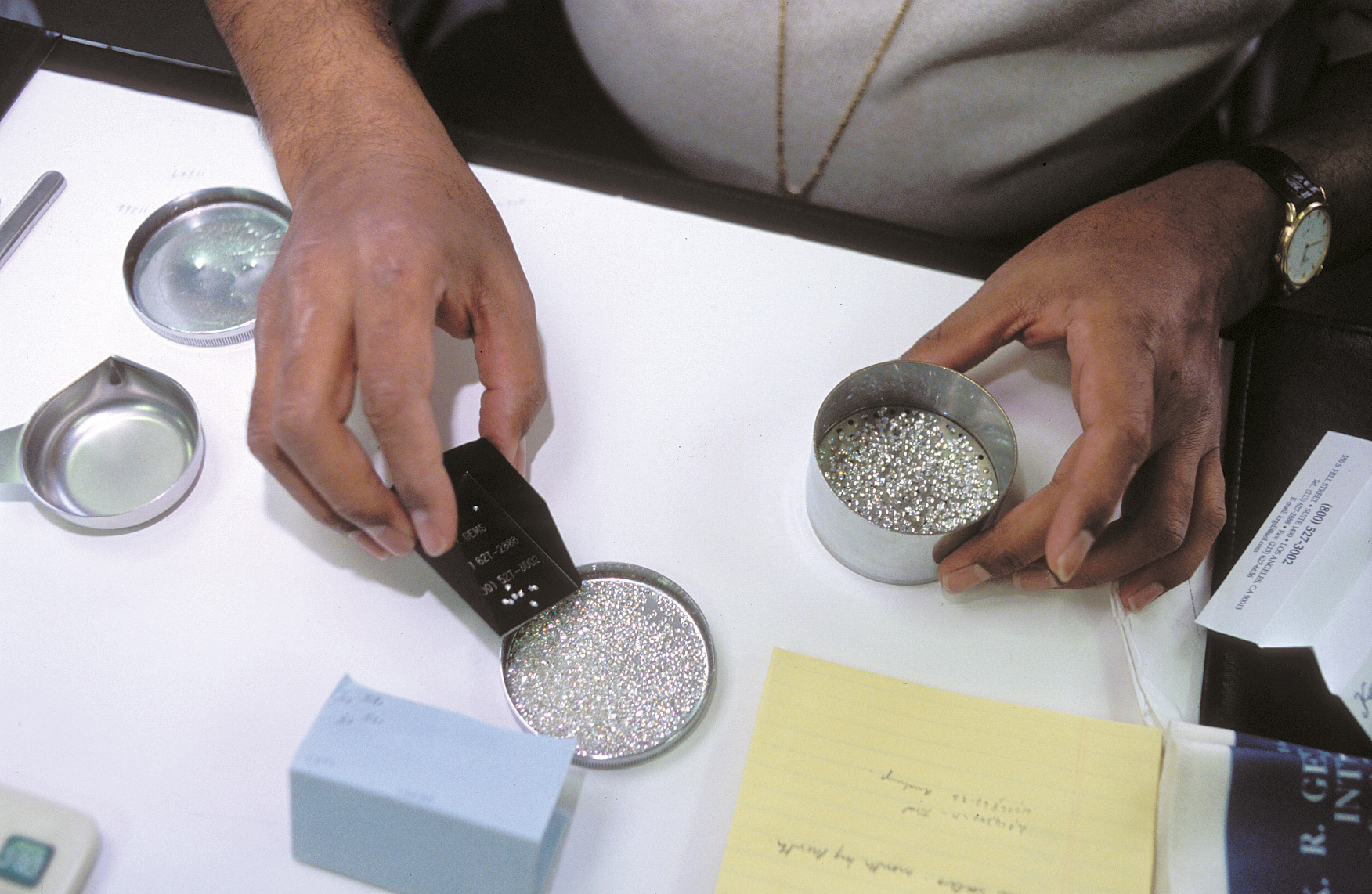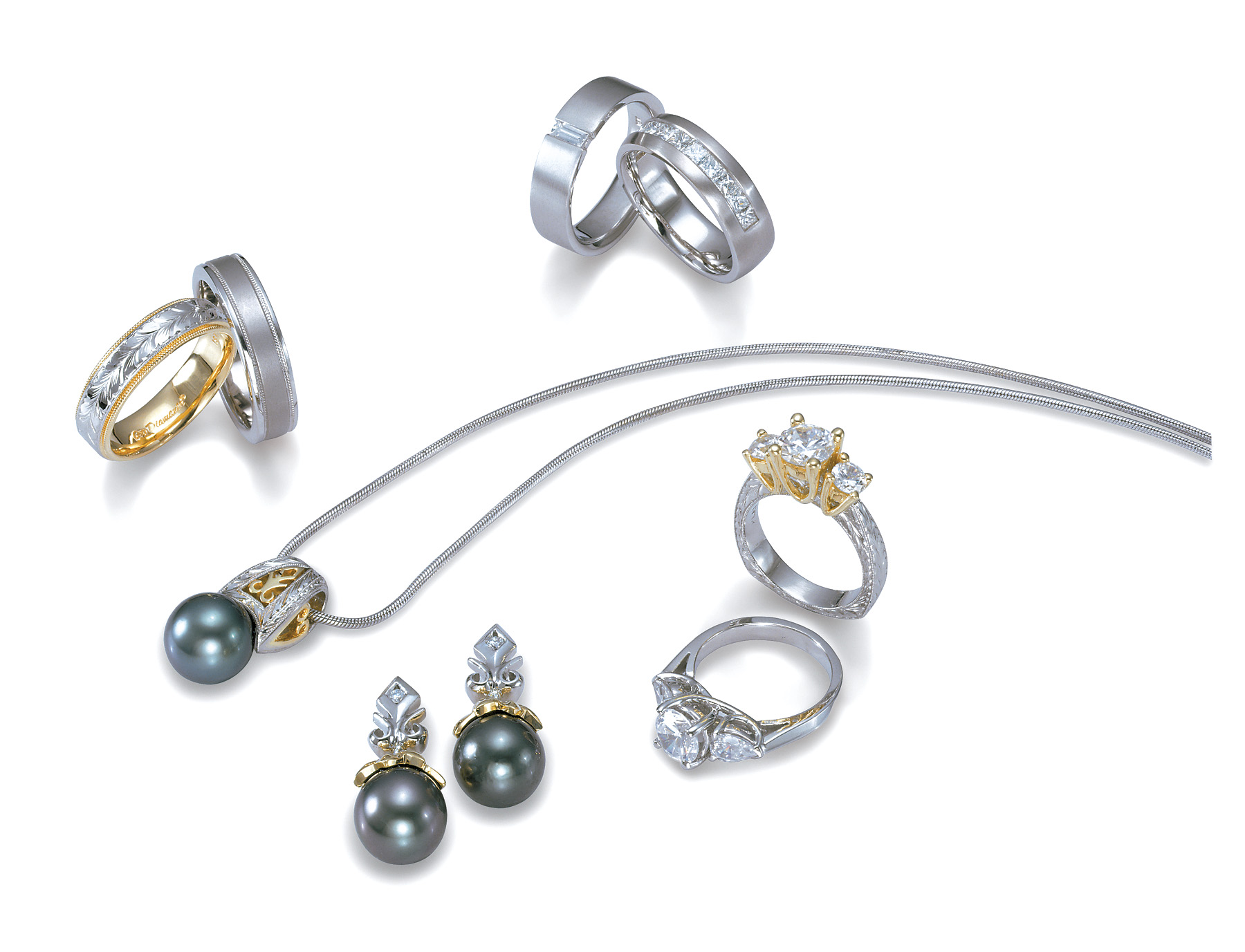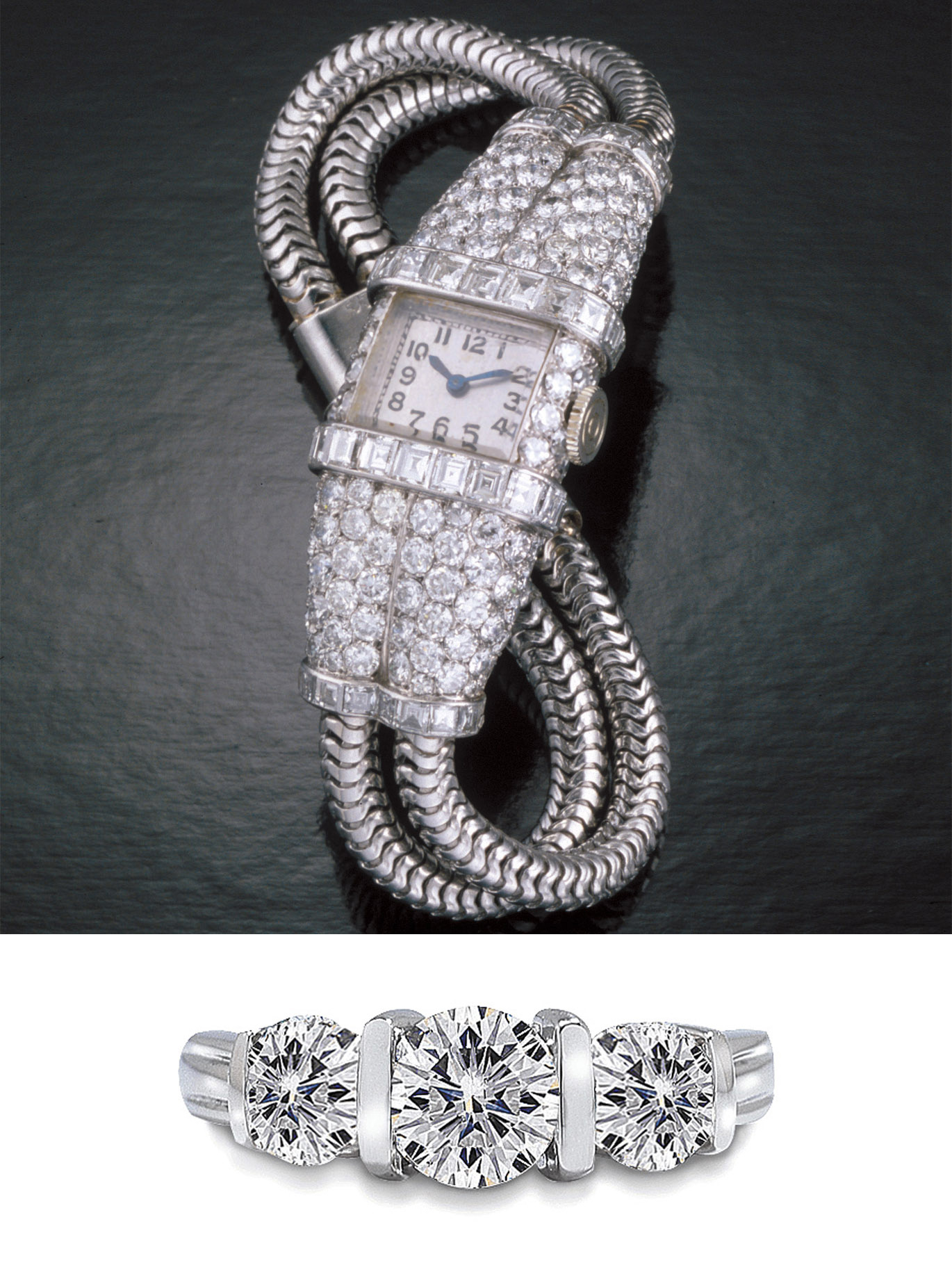Grading skills are useful—in some cases essential—if you work for a dealer, jewelry manufacturer, or retailer. And you’ll probably deal with a wider range of goods than graders in gem labs. You’ll see everything from large, fine stones to tiny ones.
Usually, the amount of attention a diamond gets depends on its quality and value. Large, high-quality stones deserve a lot of attention, especially if they haven’t yet been graded by a reputable lab. On the other hand, it’s not worthwhile to spend a lot of time grading small, low- quality stones. A quick examination under a loupe is usually all they get.
The graders in gemological labs have an advantage over many others in the industry: They don’t handle mounted diamonds. Mounted diamonds make up the majority of the goods in many jewelry businesses, especially retail stores. Some gem labs don’t grade mounted diamonds because the mountings hide clarity and cut details, mask color, and make it impossible to weigh the diamonds.
Small diamonds are often sorted rather than graded individually. A 10-ct. parcel of small rounds, for example, might contain about 335 small diamonds that weigh about 3 pts. (0.03 ct.) each. It wouldn’t be cost effective to grade each tiny diamond. So the dealer might put them through a series of sieves and sort them by size, and then sort the various sizes into smaller piles based on color. The dealer might not even look for clarity characteristics. Parcels of melee are usually sold by clarity range—if the supplier is reputable, the dealer can trust that the diamonds in the parcel will be within the requested clarity range.
Sorting and matching is useful for more than loose diamonds. When manufacturers mount diamonds together in the same piece of jewelry, they take care to ensure that each stone matches the others in terms of size, cut, color, and clarity. If the diamonds are well matched, it’s a sign that the manufacturer took care with the piece, and it’s likely that the same attention to detail also applies to the jewelry article’s execution and finish. It’s easier to sell a well-finished piece of jewelry containing precisely matched diamonds—no matter what their clarity grade—because you can justify its price to your customers.









